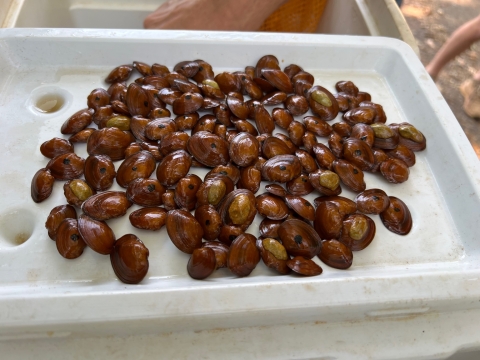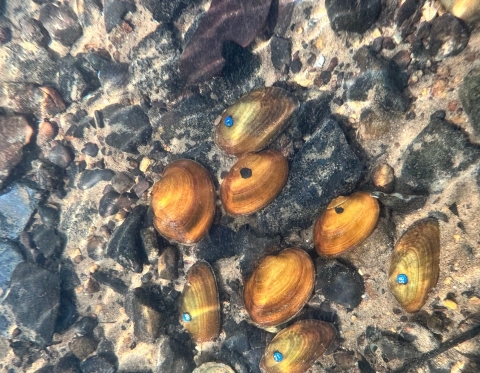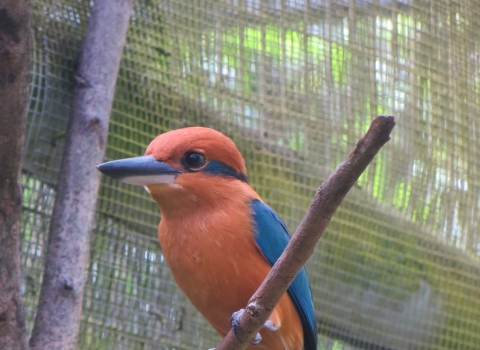About dam time!
In mid-September, biologists eagerly placed more than 250 federally protected mussels into Big Canoe Creek at the historicGoodwin's Mill ten years after the dam was removed to restore habitat for fishes and mussels.
“I have to say," said Doug Morrison, a Big Canoe Creek Preserve Partners board member, "this is a really special day for me.”
Morrison is a Springville, Alabama local present for the dam removal in 2013. Goodwin's Mill was built in the 1880s and was originally used to power agrist mill until it was abandoned in the 1940s. Thanks to a collaborative effort between Friends of Big Canoe Creek, theCoosa Riverkeeper, The Nature Conservancy, and the US Fish and Wildlife Service (Service), the 130-year-old barrier was removed in November 2013, reconnecting 20 miles of upstream habitat to the rest of Big Canoe Creek.
The dam removal was a big win for species conservation, allowing unfettered passage for 54 species of fish within the watershed. And let’s not forget about the mussels! Reconnecting habitat for fishes also means increasing habitatfor mussels, which rely on fish for dispersal. Musselsuse host fish like a bus which shuttles their babies upstream.
The Big Canoe Creek watershed was historically home to 10 federally protected mussel and fish species. One unique mussel species, the federally endangered Canoe Creek clubshell, is only found in the Big Canoe Creek watershed and nowhere else in the world, making it extremely rare and particularly susceptible to catastrophic events. Though the species historically livedthroughout the watershed, it is currently found in low numbers, with little evidence of recruitment.
Thanks to this project and ongoing habitat restoration efforts within the watershed, species restoration will continue. That’s why in September 2023, biologists with the Alabama Aquatic Biodiversity Center (AABC) and the Service met at Goodwin's Mill with property owner Laura Lovell to release federally endangered Coosa moccasinshell and Canoe Creek clubshell mussels. The release marked the return of the Coosa moccasinshell into the watershed -- not seen there since1974.
The released animals were raised at AABC until large enough to stock. To raise the animals, gravid females from healthy populations were brought back to AABC in Marion, Alabama. The larval babies, smaller than the size of a grain of salt, were extracted from the females and placed onto their fish host.
Raising mussels in captivity can be difficult becausebiologists care for the mussels andtheir fish host. Once the mussels grow large enough, which can take 16-27 months, depending on the species, they are marked with PIT tags. PIT tags provide a unique identification number, much like microchips used on pets.
The site will be monitored annually and with the help of a PIT tag reader, biologists will be able to keep track of the mussels. The hope is to continue augmenting the sites with additional musselsuntil they are established and reproducing on their own.




